

Continued from the first page of wildlife:
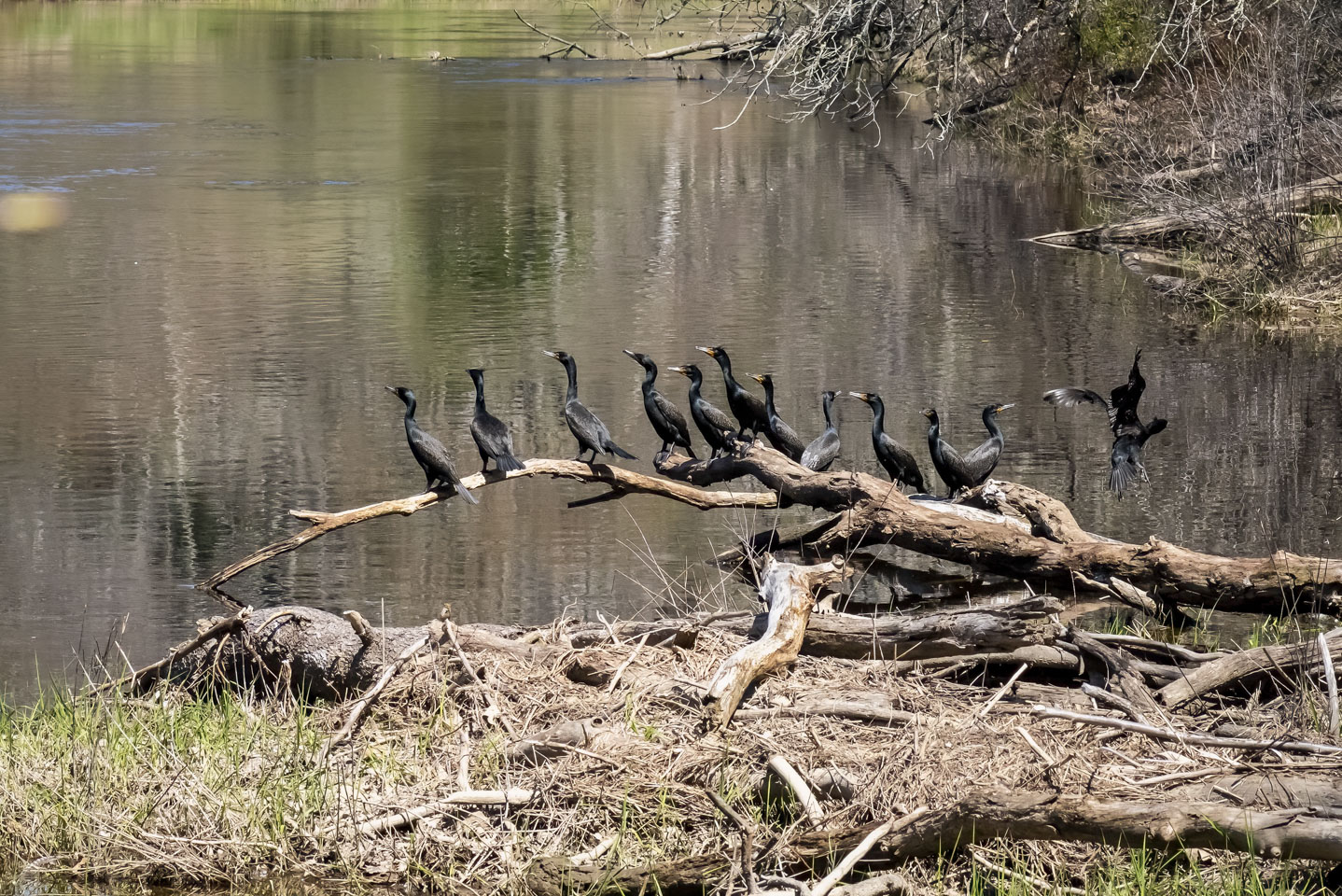
Those are Great Cormorants. Although a common sea bird, they are only seen in North America along the Atlantic coast. They dive deep for fish and often stand on rocks or logs to dry themselves. This photo was actually along the St. George River at Payson Park in Warren.
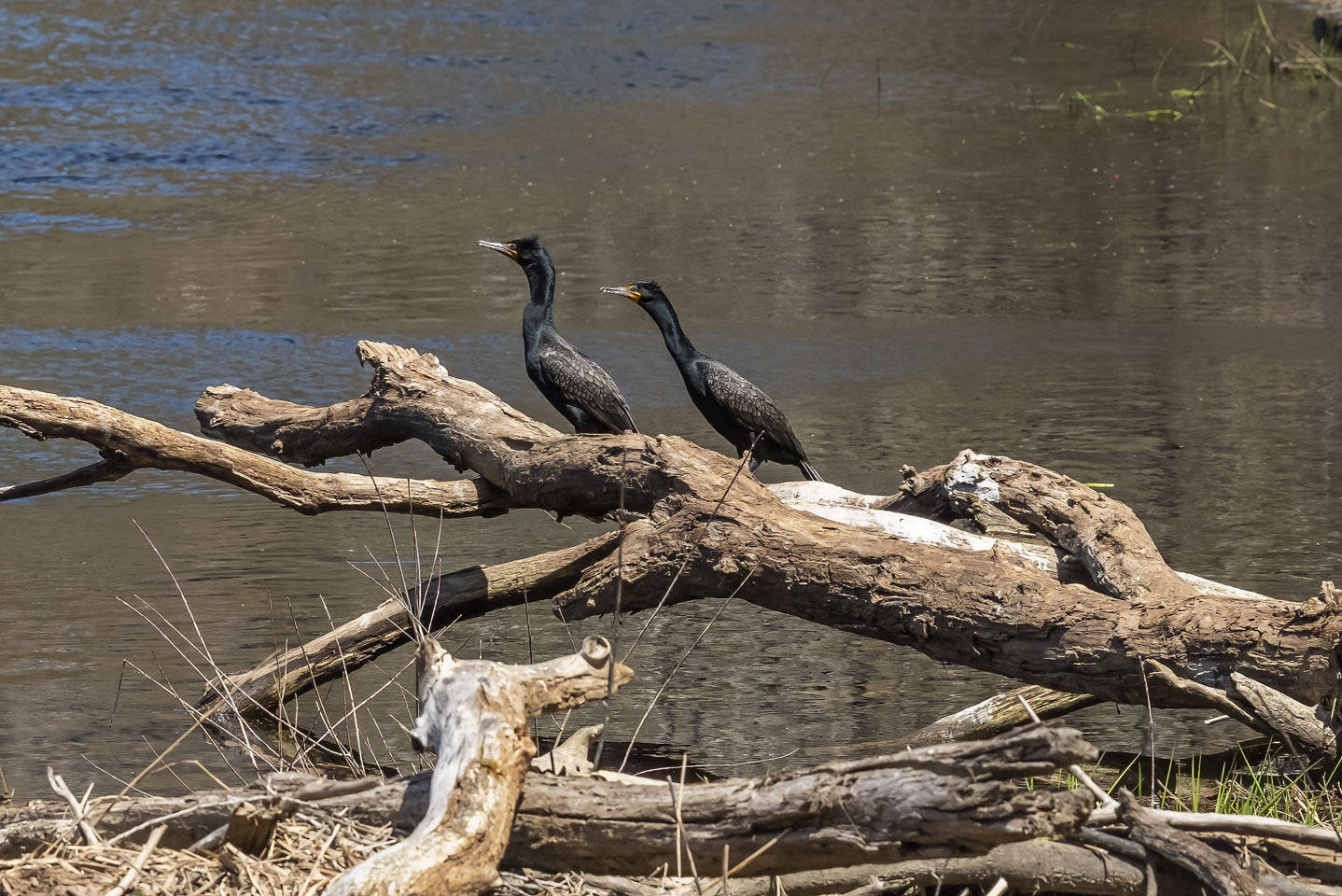
This bird is leaving a wake in the water; it is not interested in letting us come any closer.
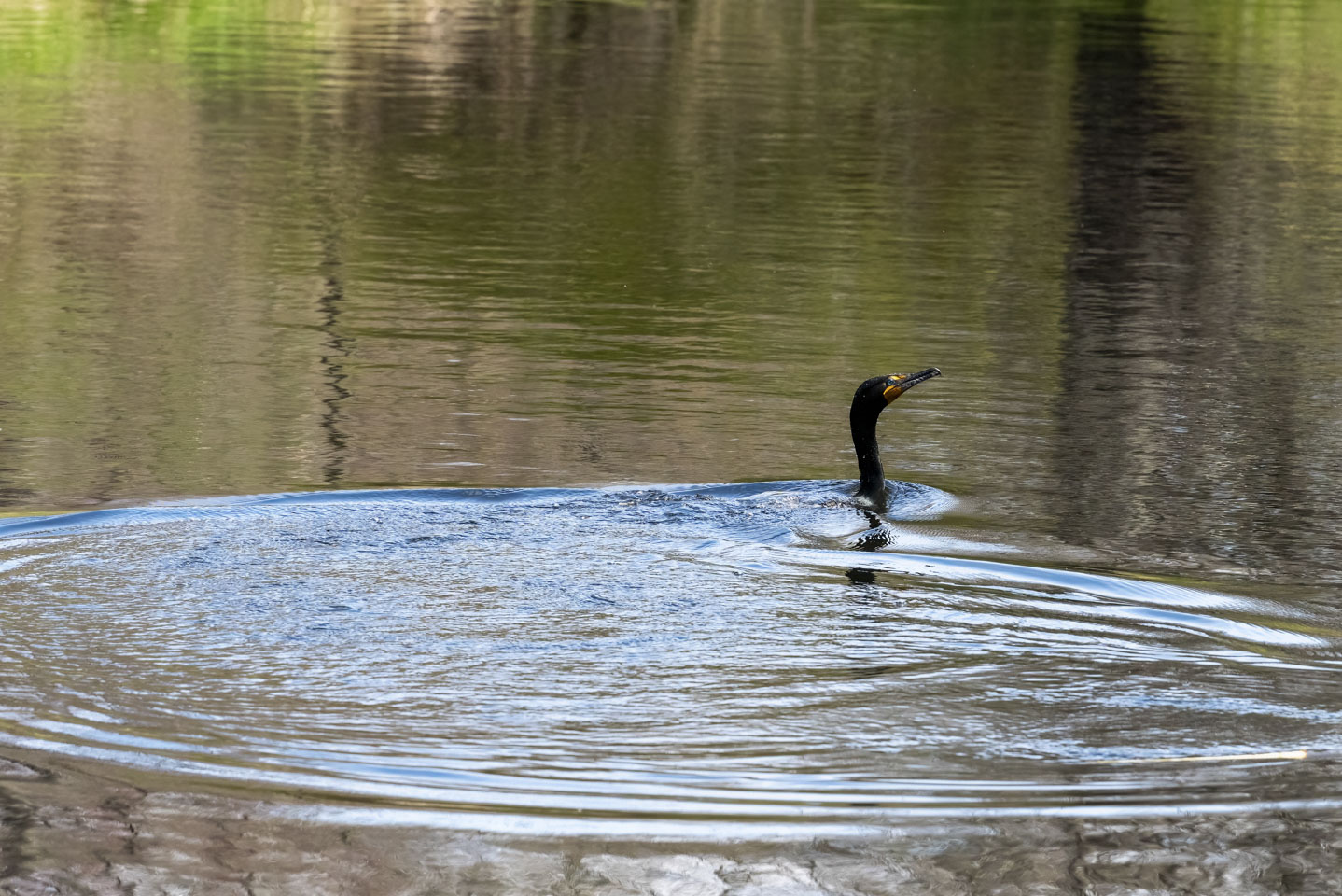
Watching a cormorant take flight, which they tend to do if we move, is interesting. They run along the water before taking to the air. In this next photo you can see the splashes of water that the bird has created. In the next, the bird's feet are poised to strike the water again, which will make another splash and give it a bit more momentum and lift.
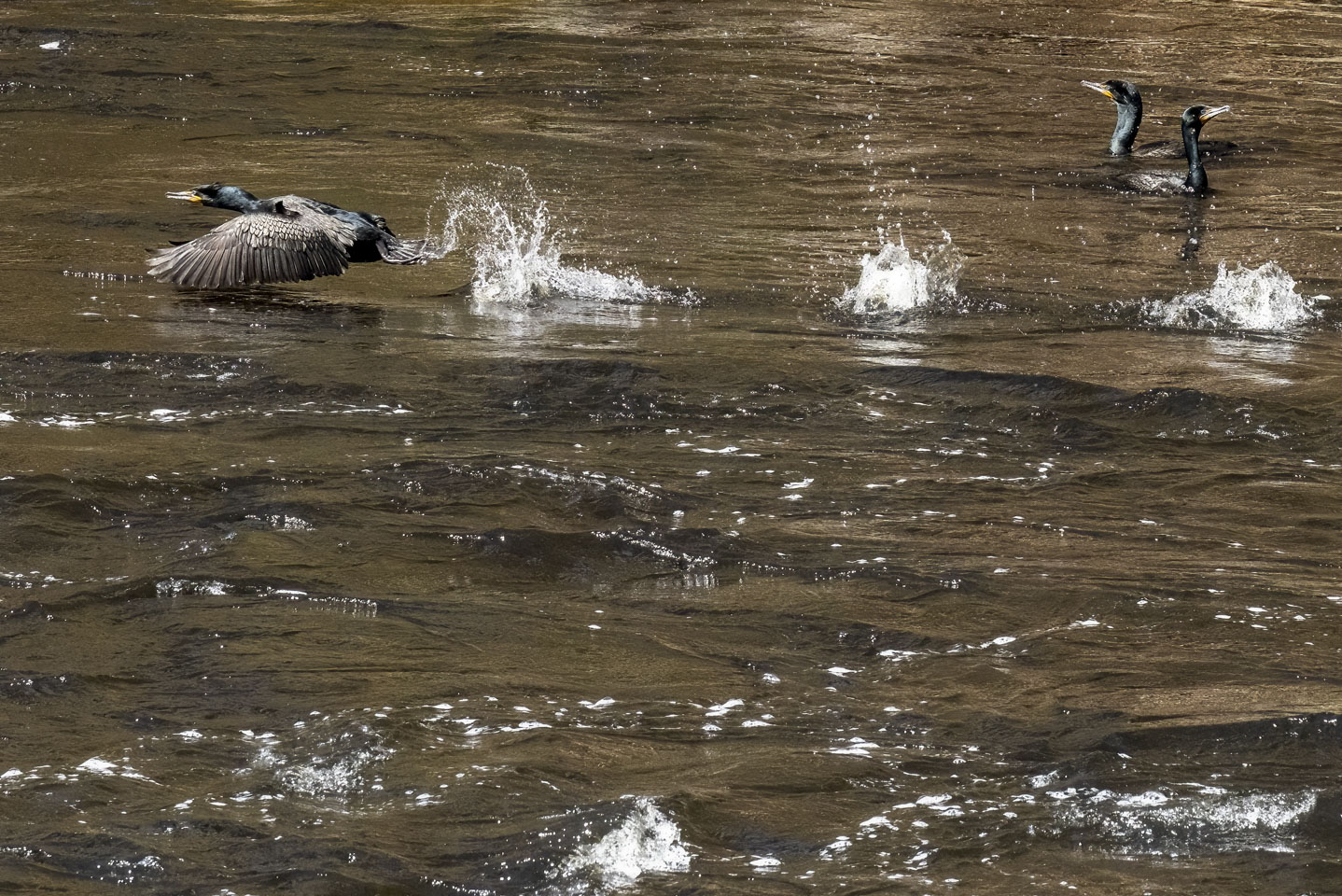
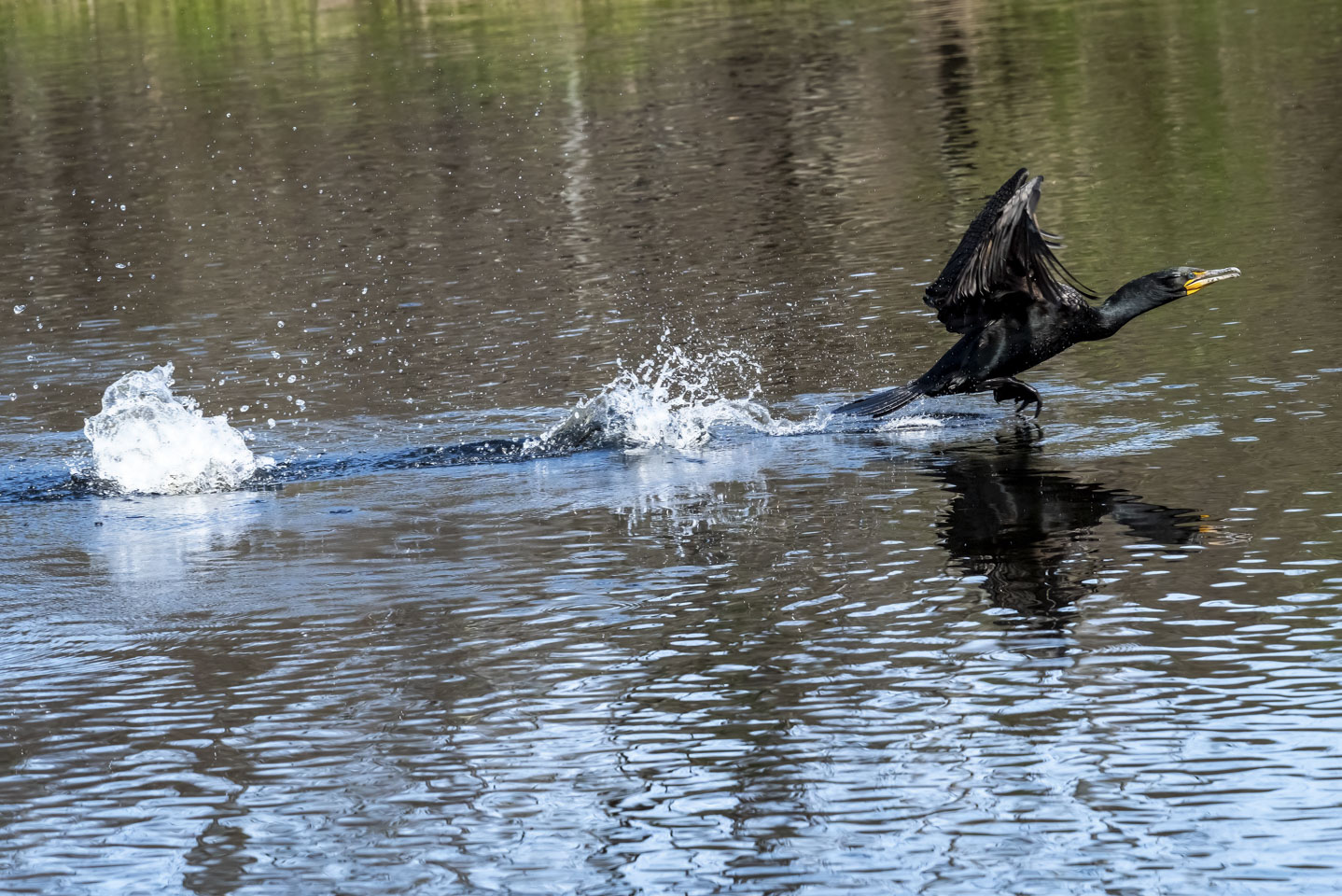
Here is a nice Canada Geese family. (Oak Point Farm)
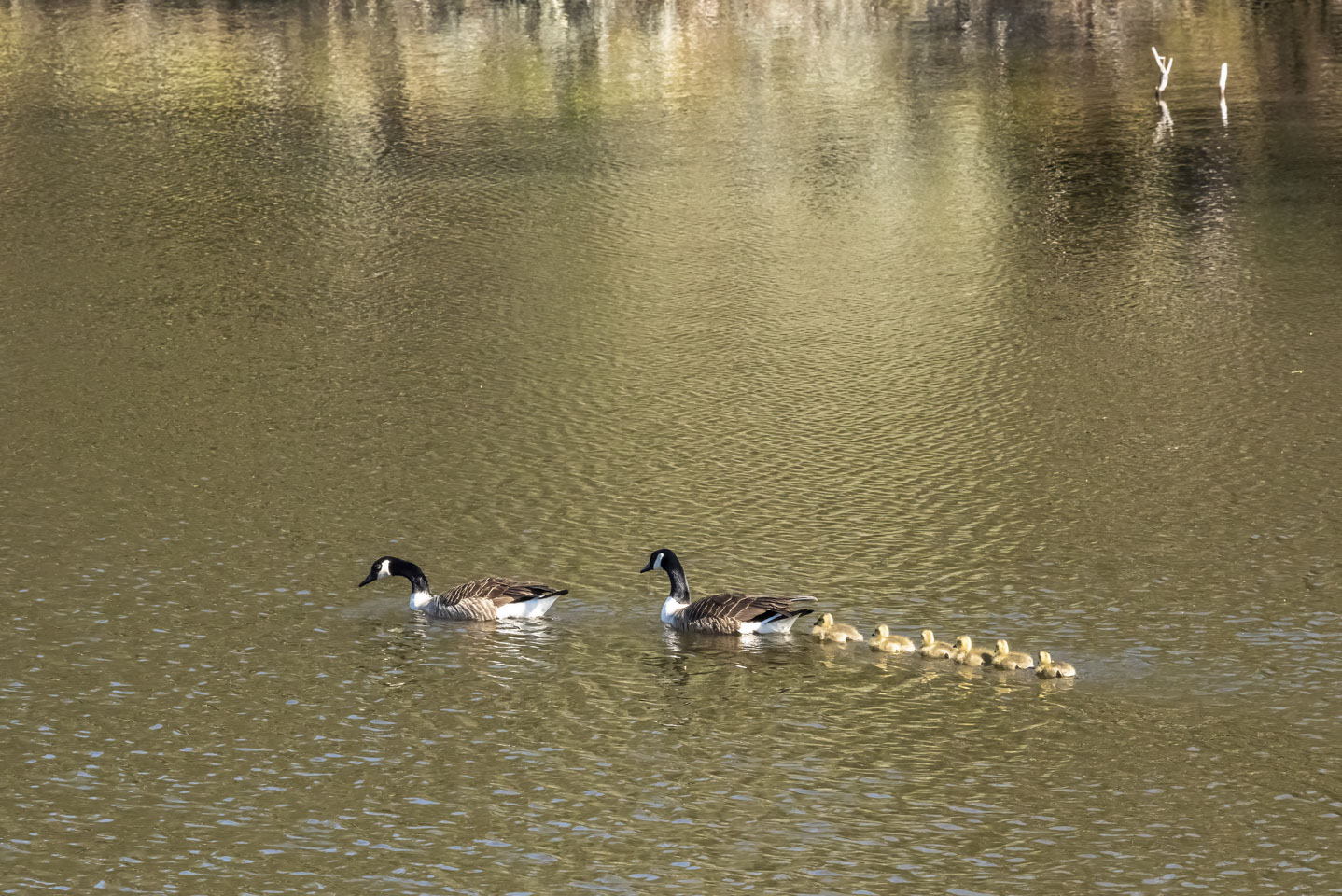
It looks like something happened with the nest of this second goose family; they only have one gosling!
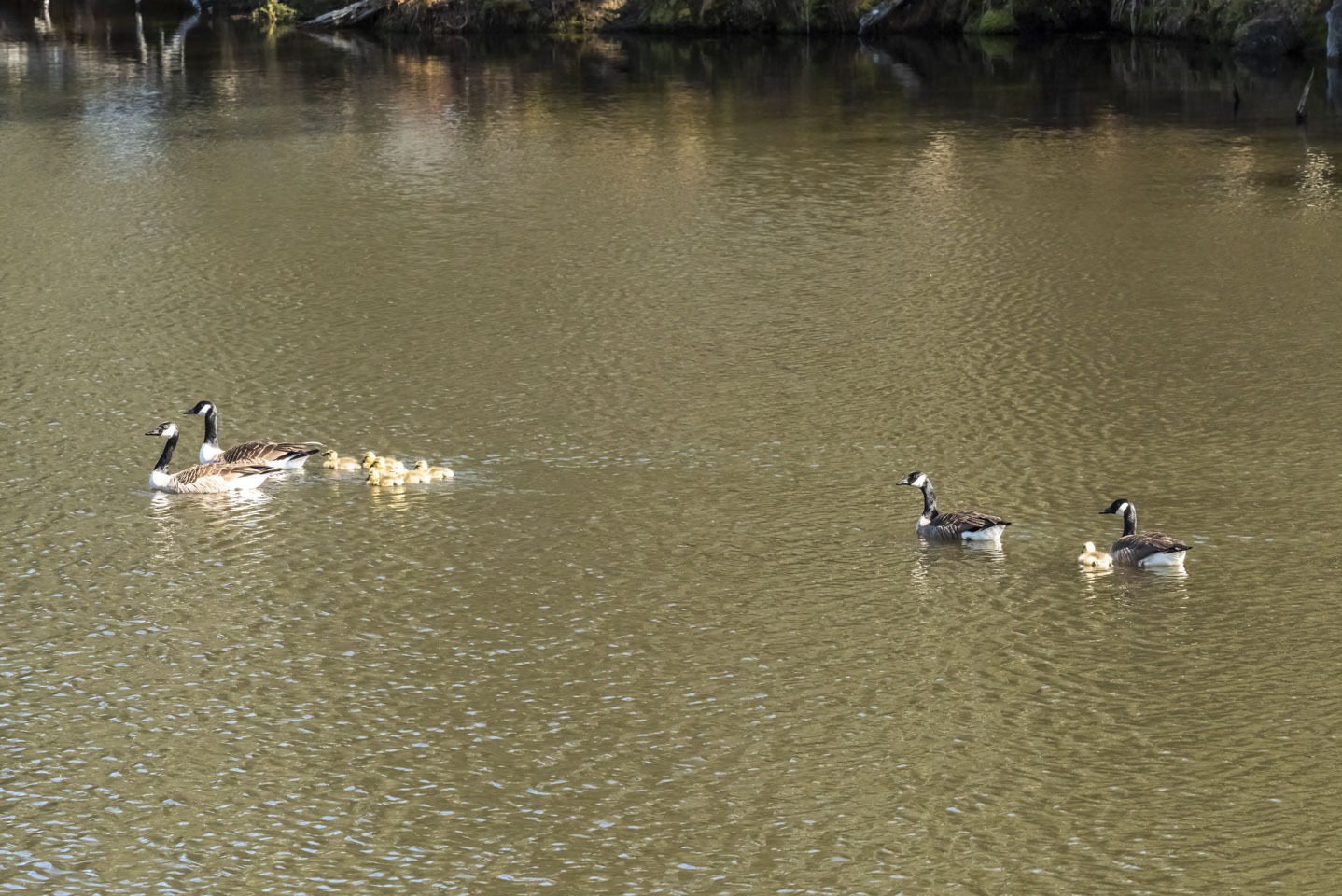
This cute mink was definitely not the culprit, since it was nowhere near those geese. (Porter Preserve)
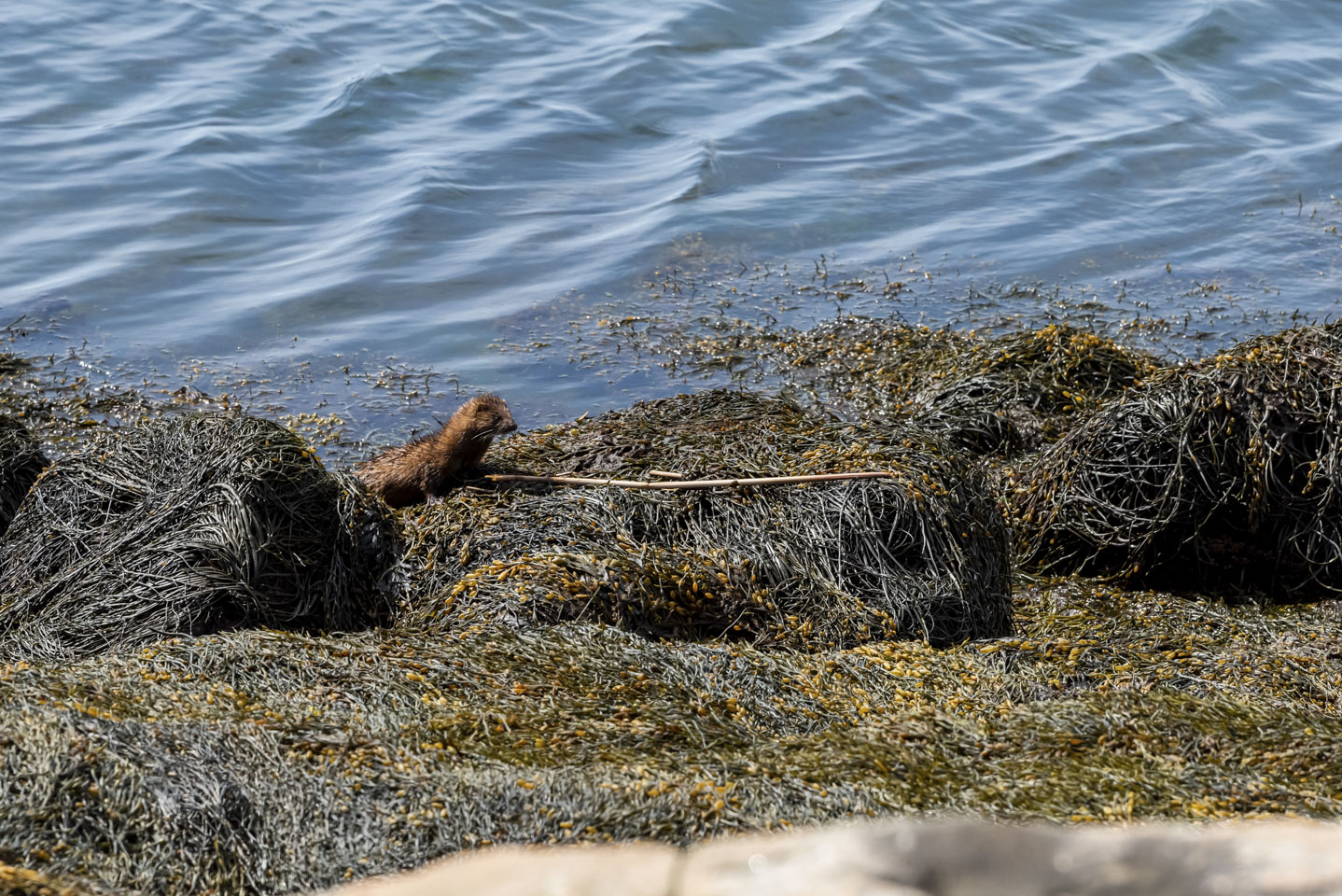
The mink was very curious. You can see it cautiously getting closer to use in this slideshow.
It is keeping an eye on us.
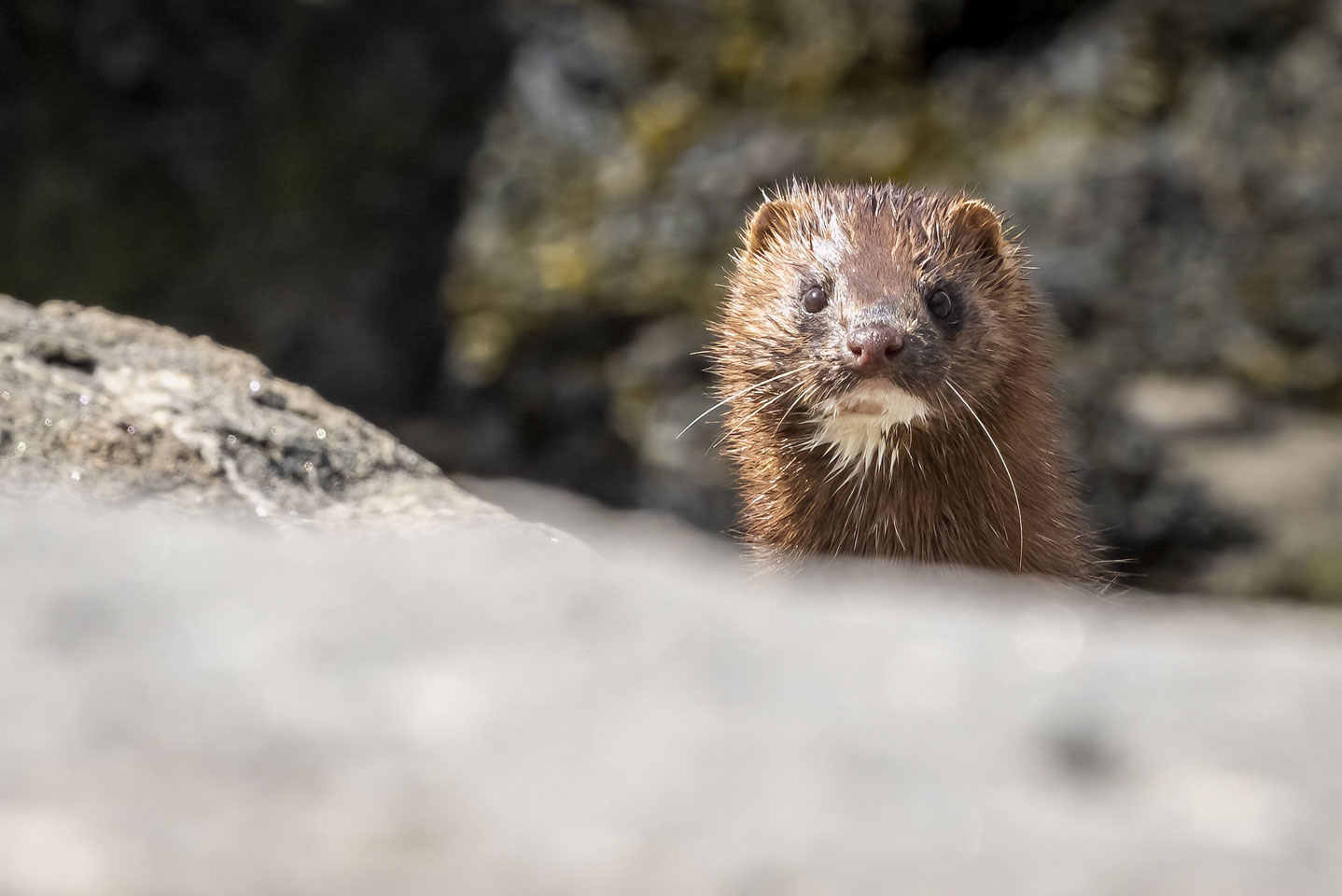
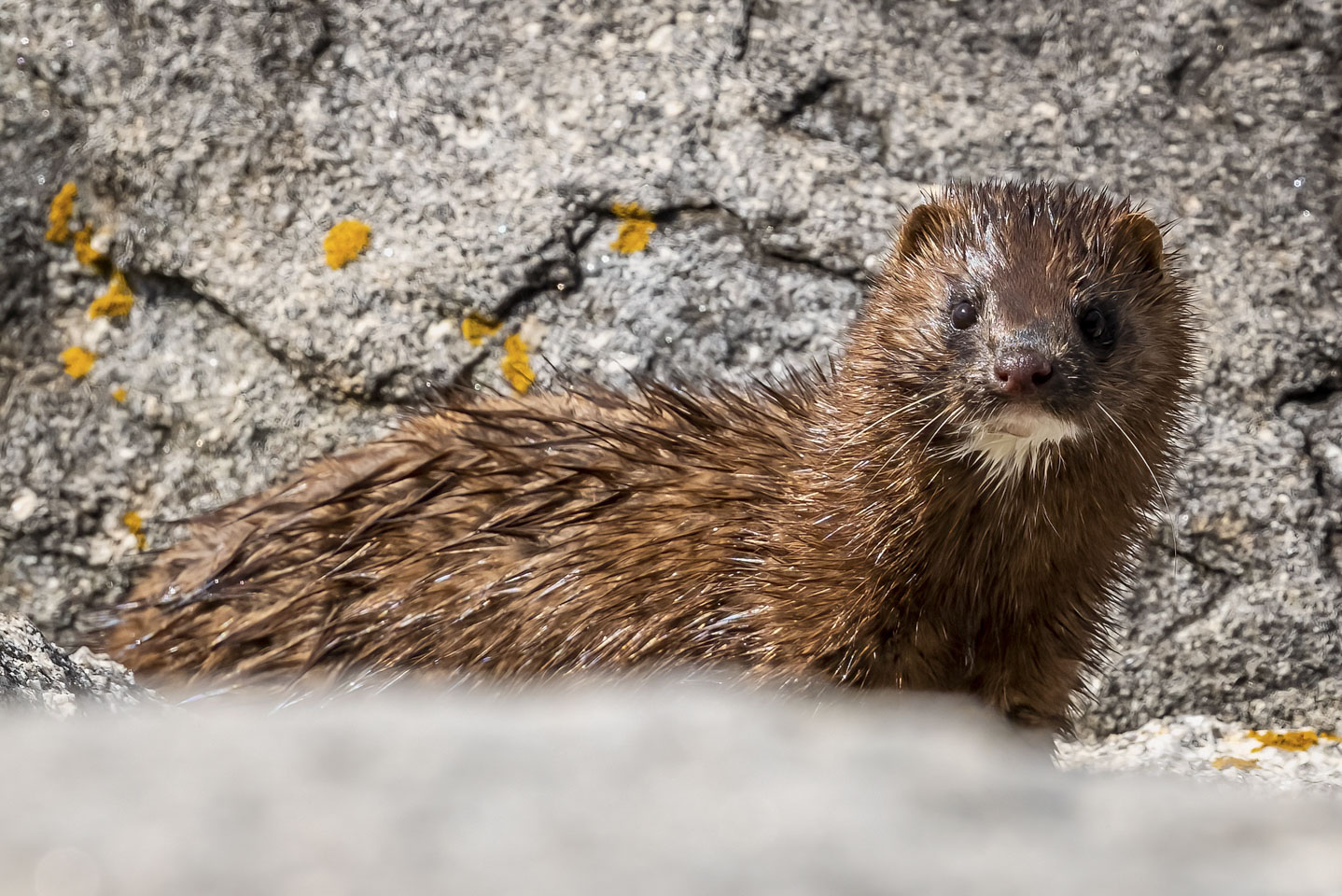
Ahhh, the sun feels good.
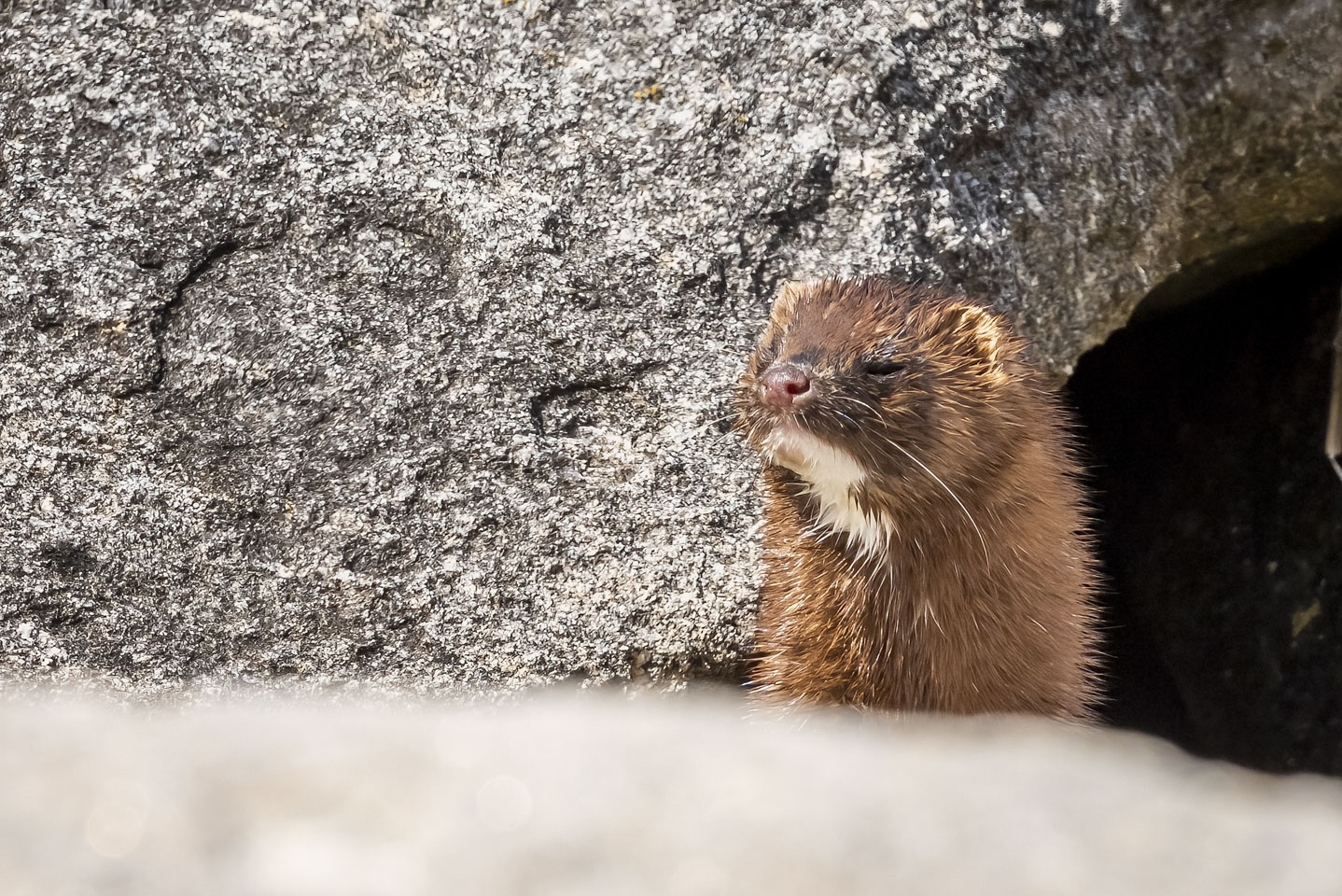
Nope, I have to keep an eye on those humans.
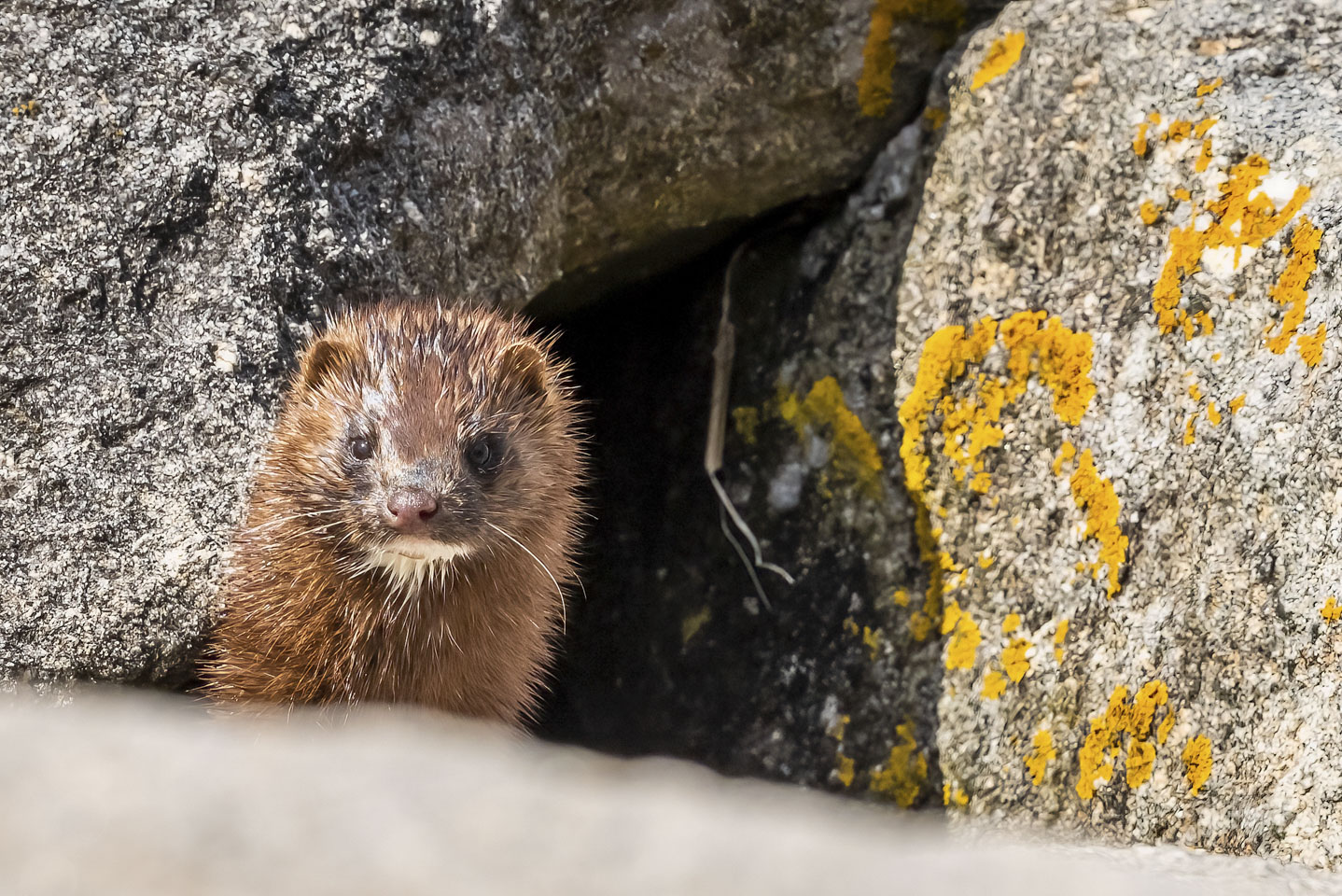
The mink made certain it didn't get too close, and eventually decided it had better move on. (If you put your cursor over this slideshow, it will stop on the currently shown photograph.)
Going up in size, we have another animal that is not actually wild. As we were driving in Southport, we noticed Cape Newagen Alpaca Farm, with a sign stating that they sell yarn made from the fur of their alpacas. So we had to stop. The owner, Anne, was very nice. She confirmed for us that Newagen, that section of Southport Island, is pronounced 'new wagon'. After looking at the yarns, we selected one to purchase. It will become a shawl.
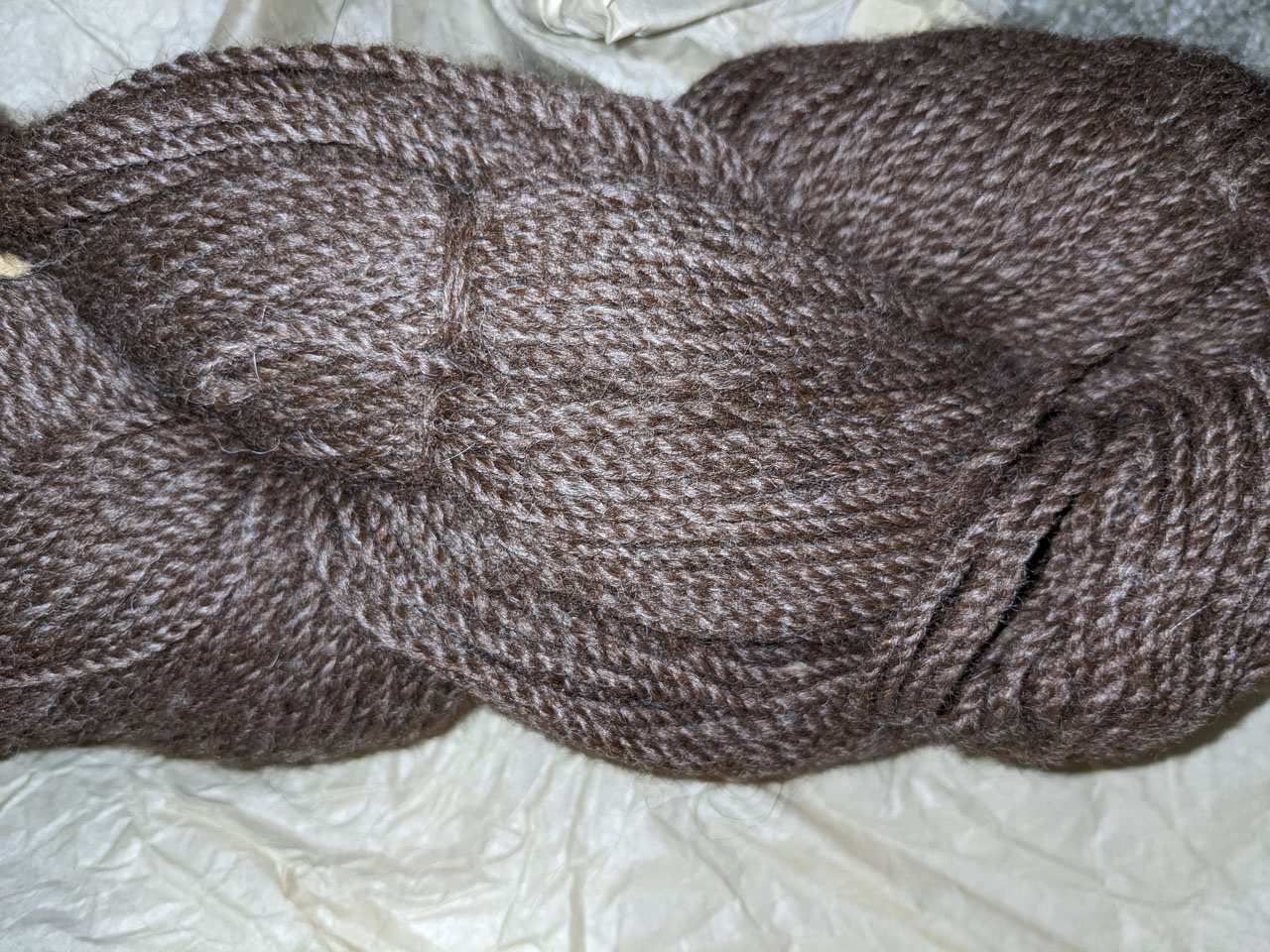
This yarn is from an alpaca named Miss America. And we were able to meet Miss America, although she was rather shy and did not get too close to us.
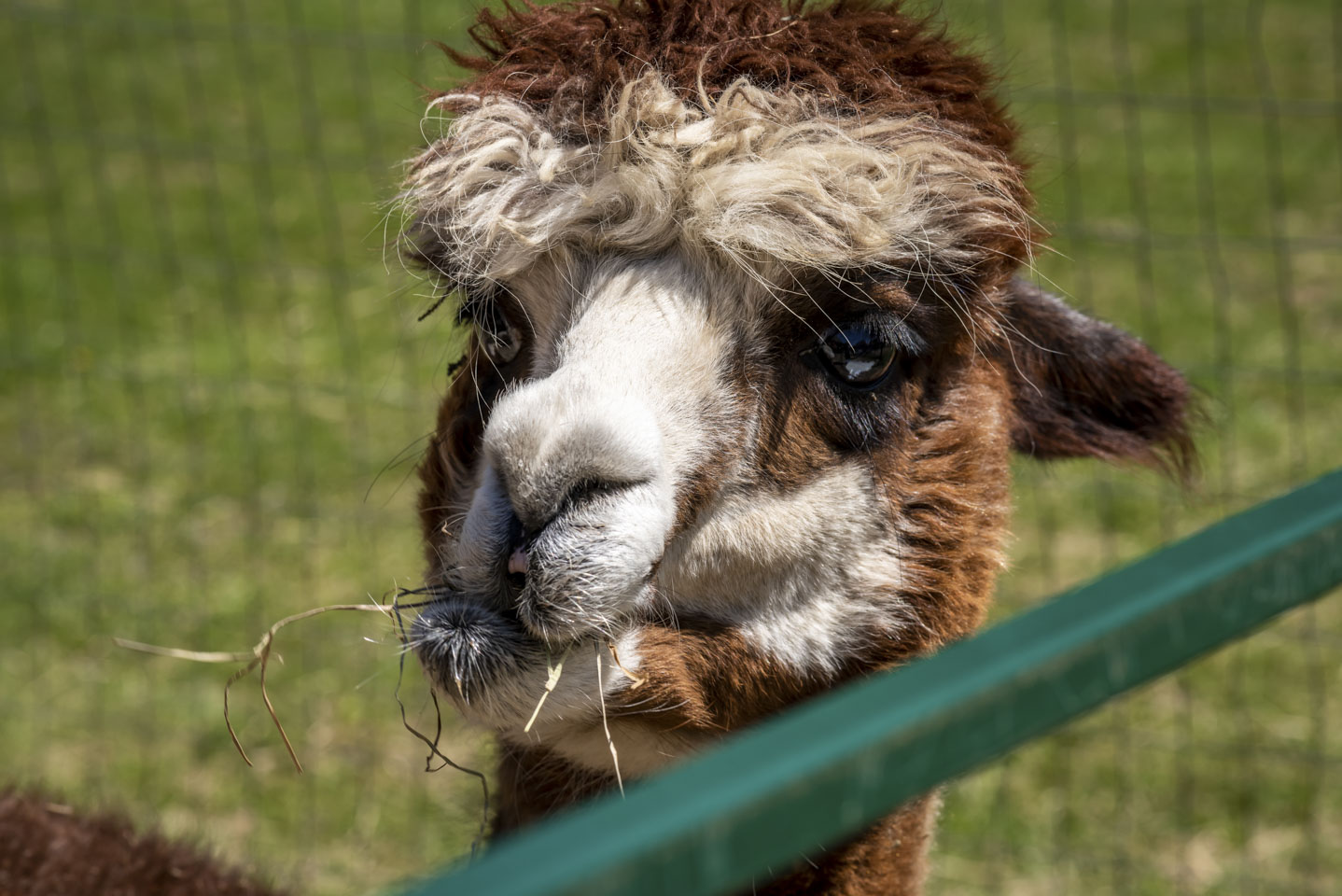
Cape Newagen Farm has both types of alpaca breeds: Huacaya and Suri. Miss America is the more common Huacaya; they have dense crimped fleece. They can be shorn every year. This photo, of a different alpaca, might let you see this a bit better.
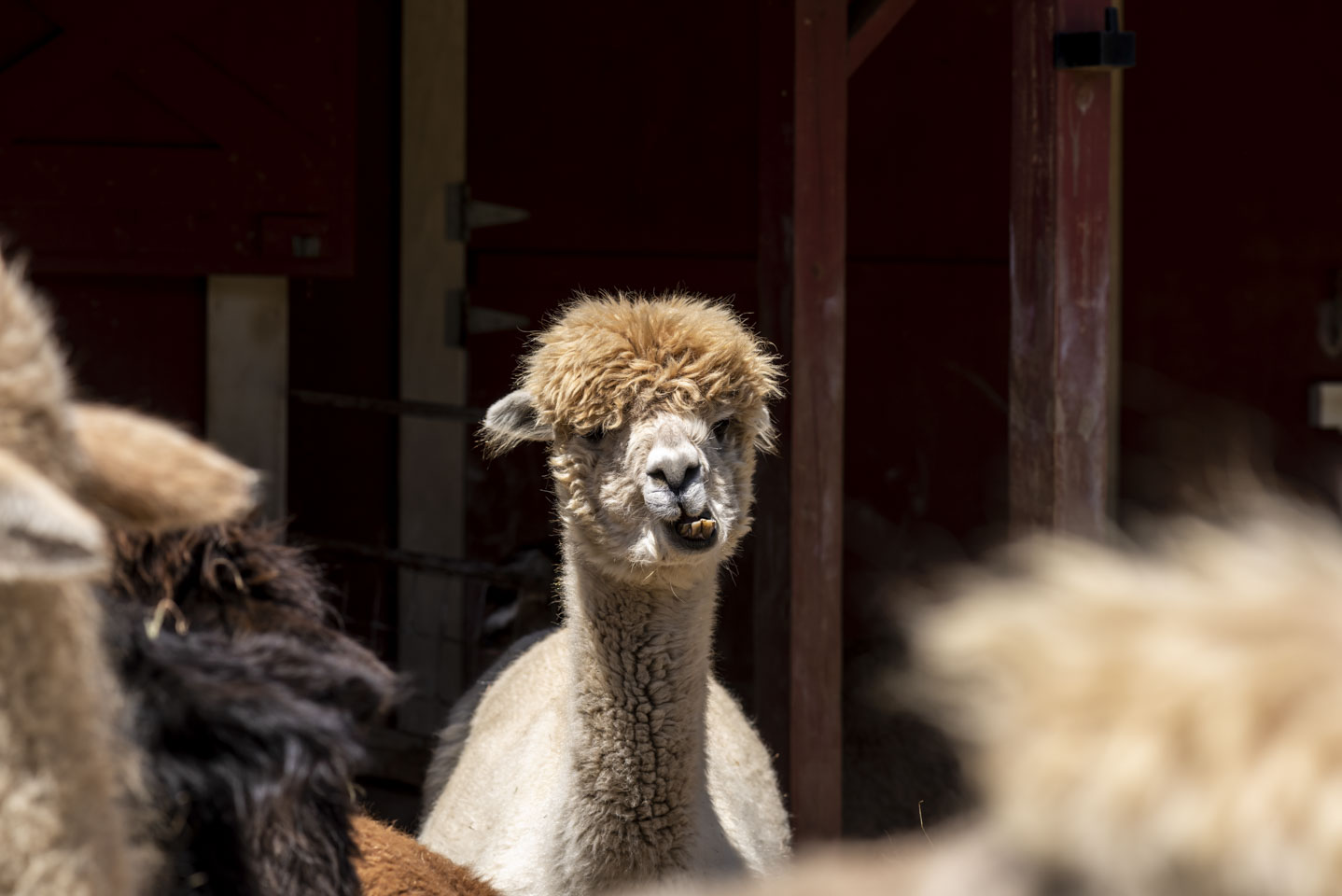
The alpaca in this next photo is a Suri. The fleece is silkier and smoother. They can only be shorn every two years. Yarn from a Suri alpaca would have more drape and less body. (Alpaca yarn is already pretty high drape.)
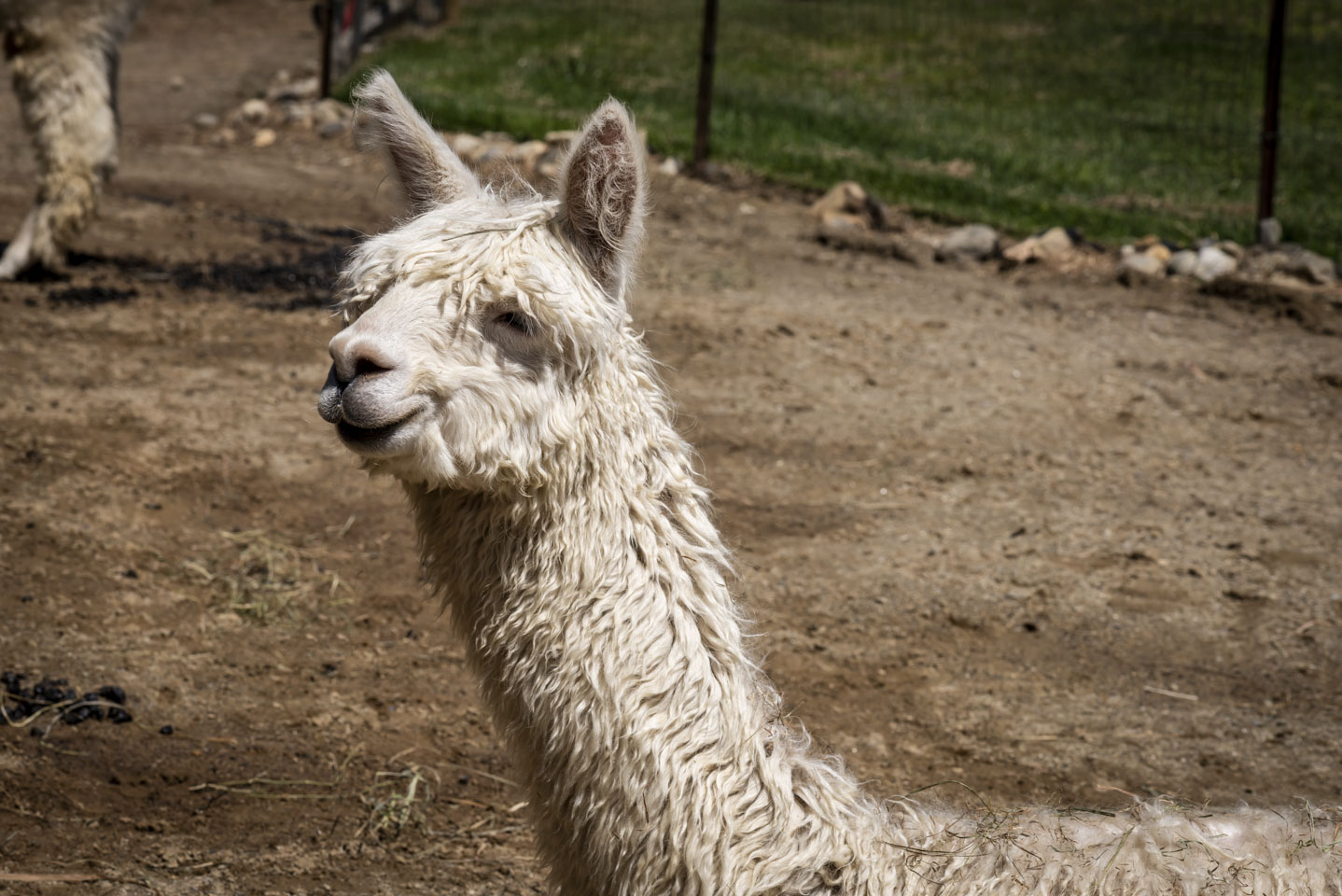
One more photo, since they are very cute:
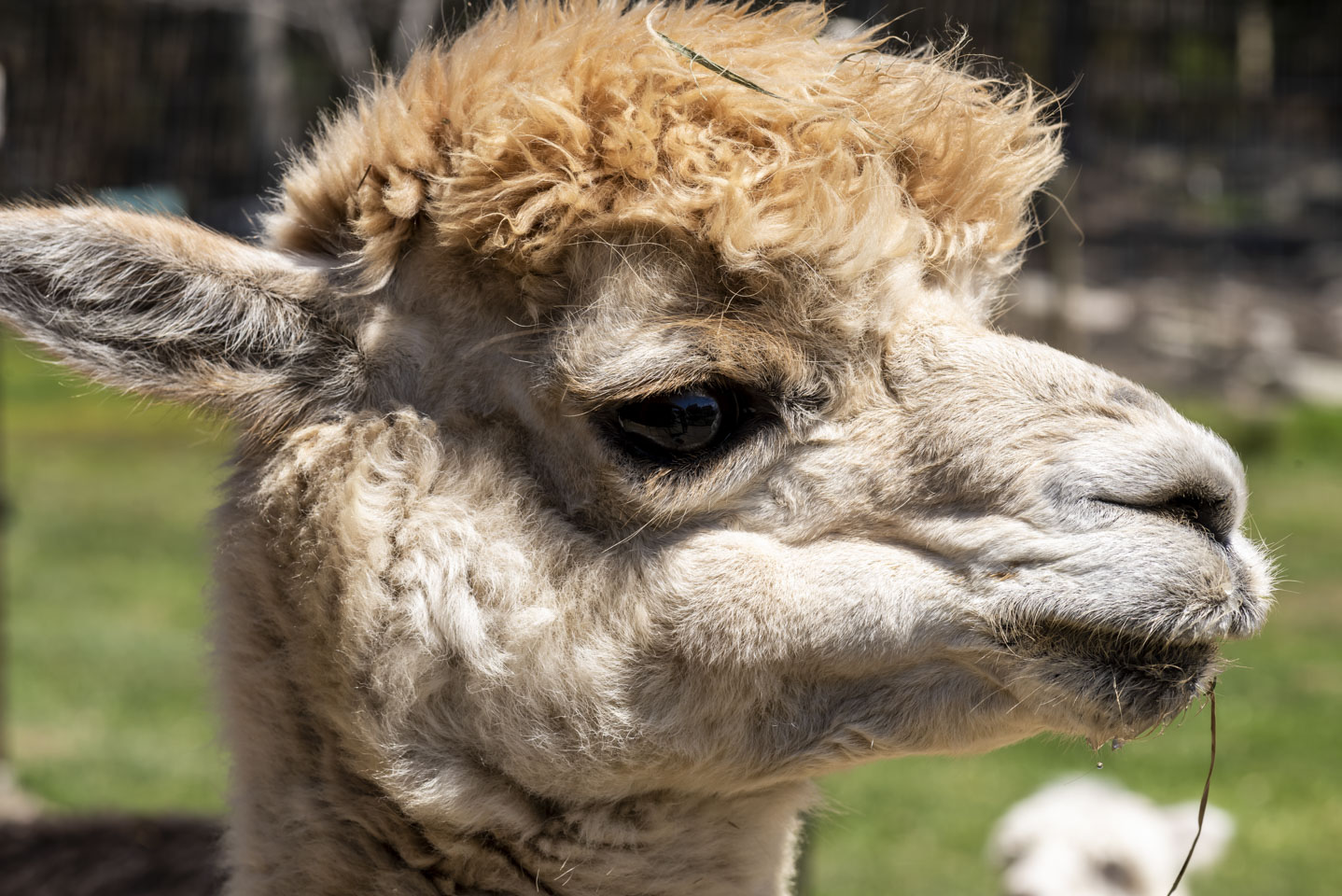
We’ll move back to the water now. One evening we walked down to the footbridge in Boothbay Harbor and looked down into the water. It was loaded with squid! There was a fisherman there who informed us that they don't bite much. This picture gives an idea of what they looked like, and the inset gives an idea of the density.
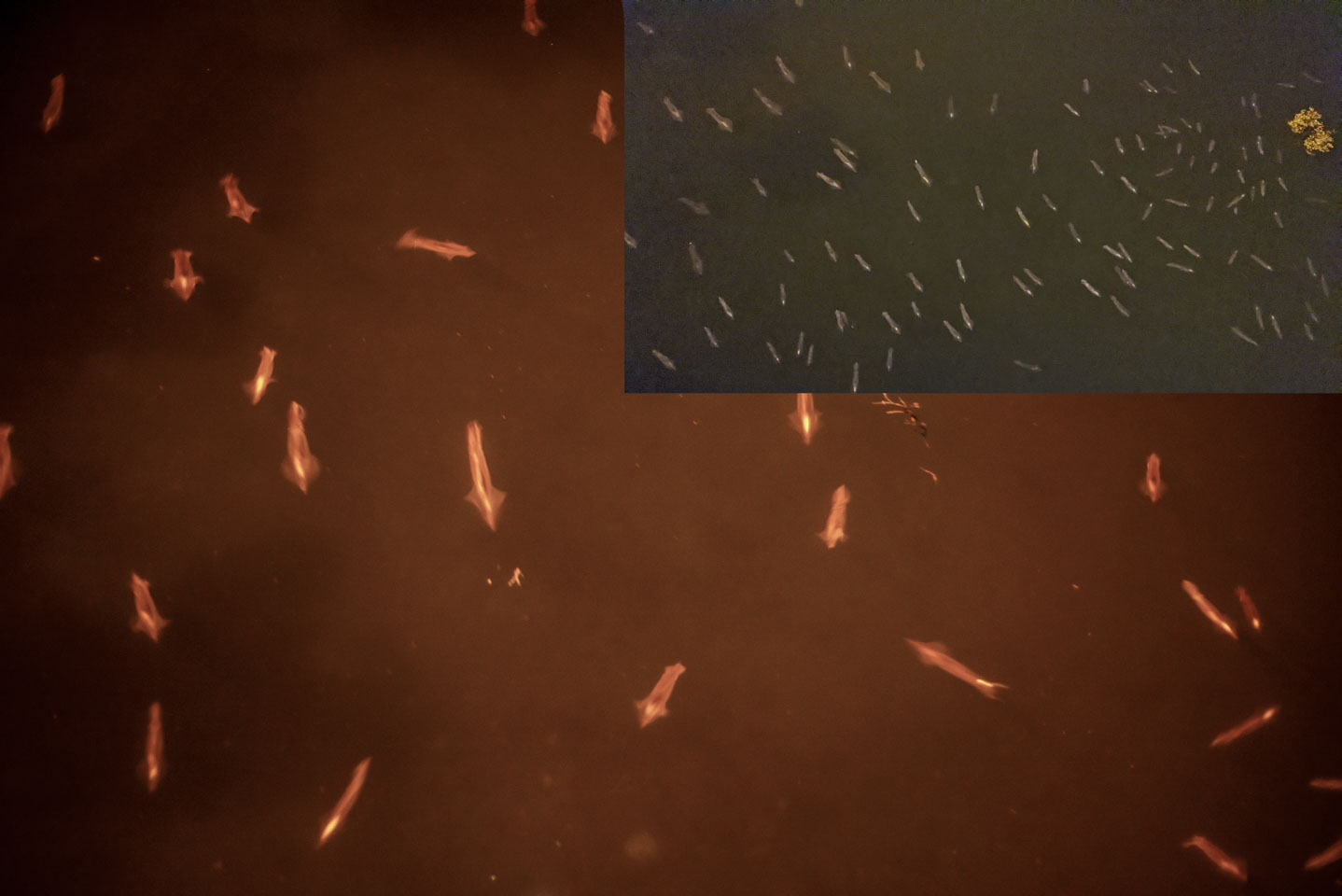
A spot to get an easier look at some sea life is in tide pools. (LaVerna Preserve)
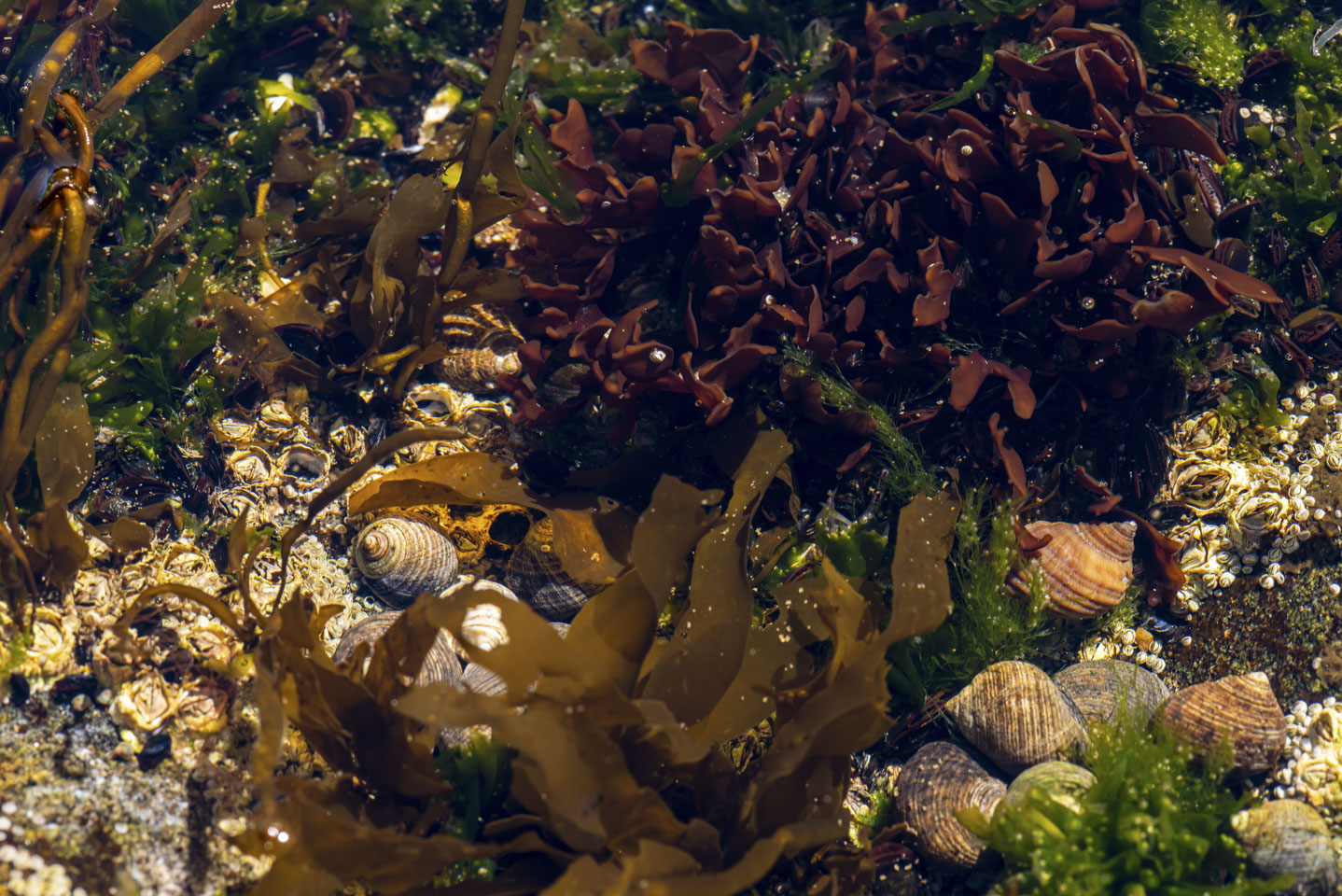
Not that this is wildlife, but it is a cute little aquatic plant.
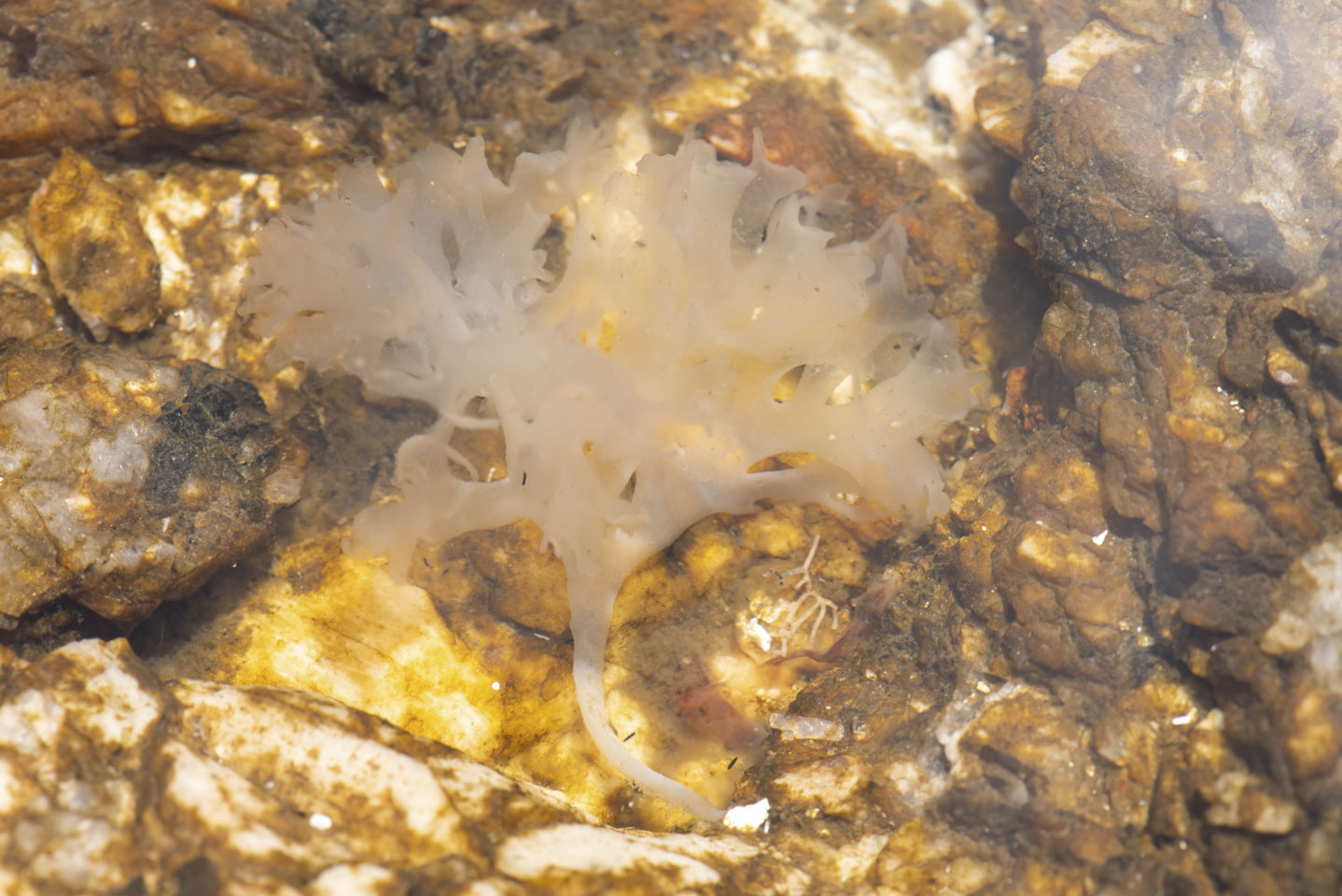
We saw a cool looking creature and did not initially even realize it was actually two, one being given a ride on top of the other. (Ocean Point)
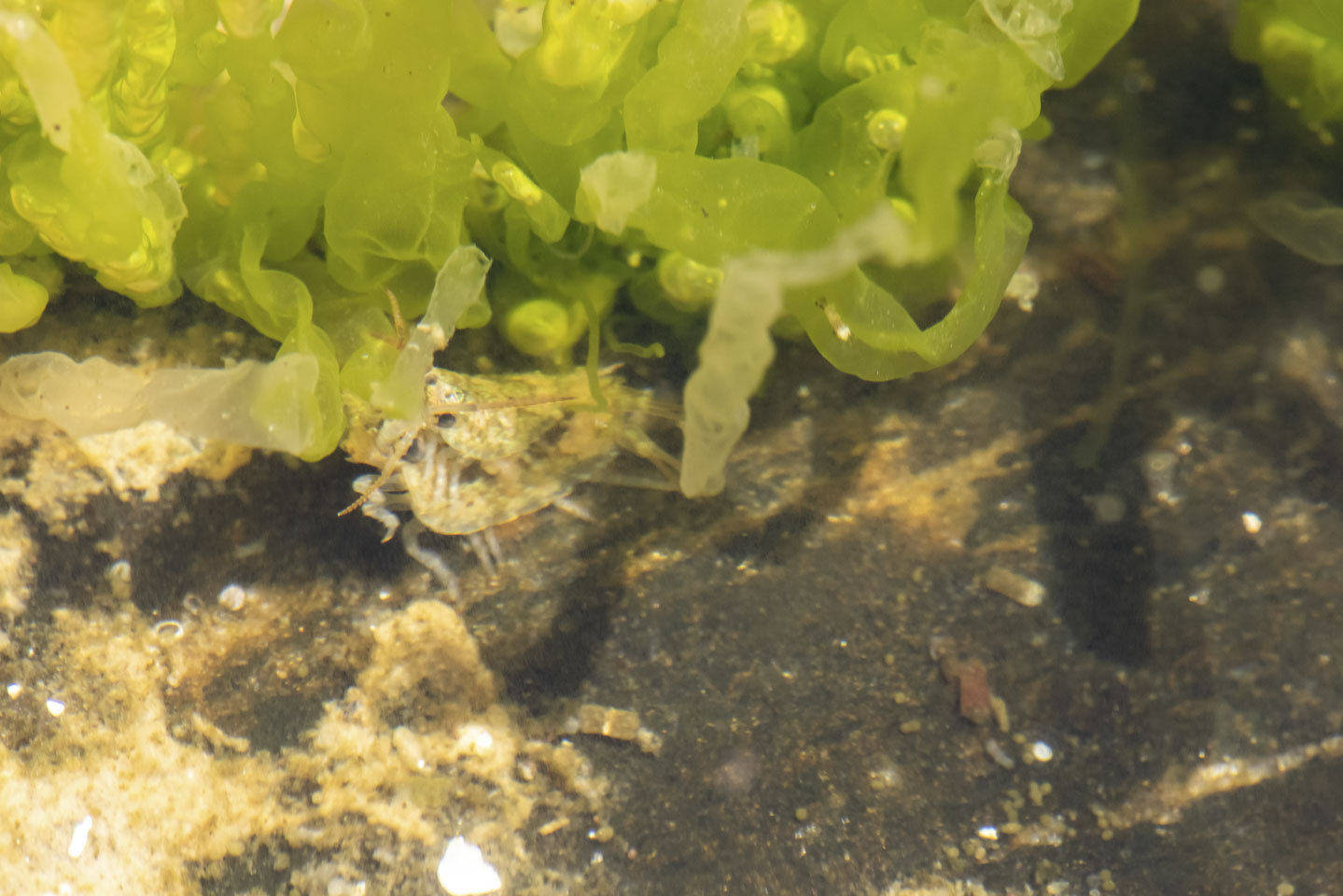
A consultation with the family's marine biology major, Melissa, provided the information that these are isopods. She said the most likely species is Idotea balthica, although that can't be verified just from these photographs. From what we read, the male sits on the back of the female for sexual intercourse so that is likely what was happening here.
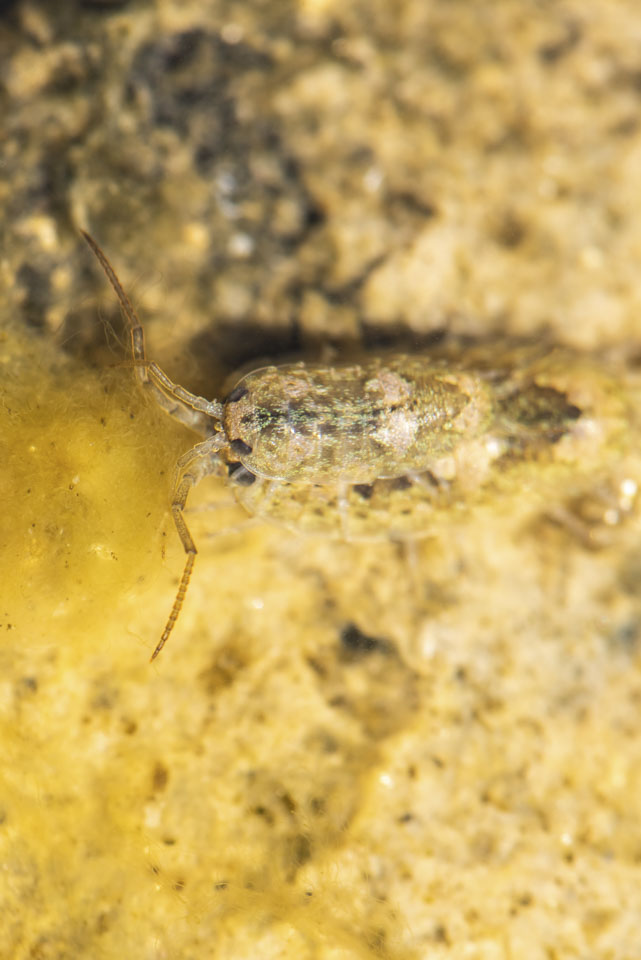
We aren't certain what this thing is, but it is cool.
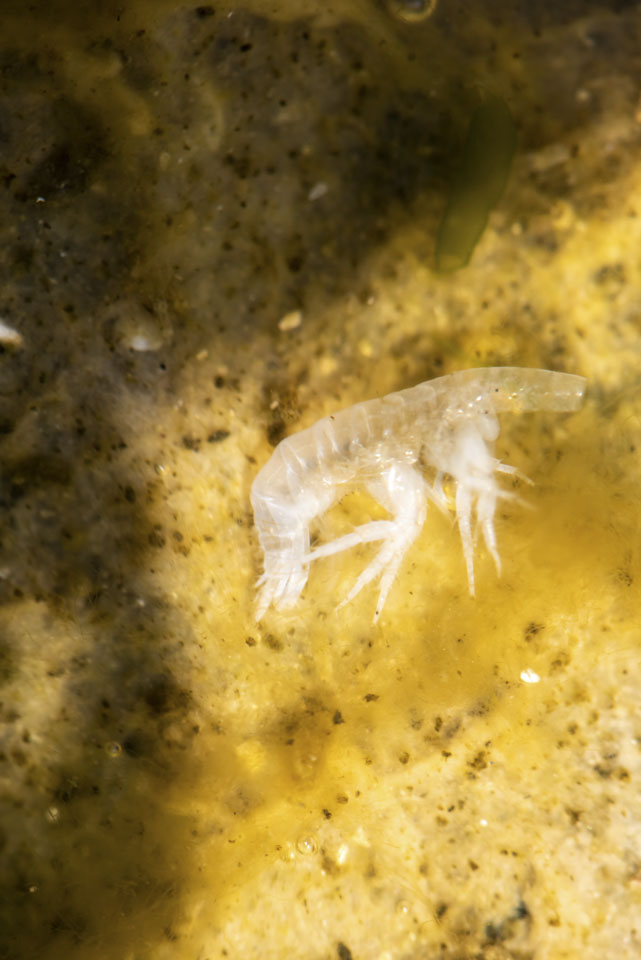
We started with birds and we will end with birds. Time to relax.
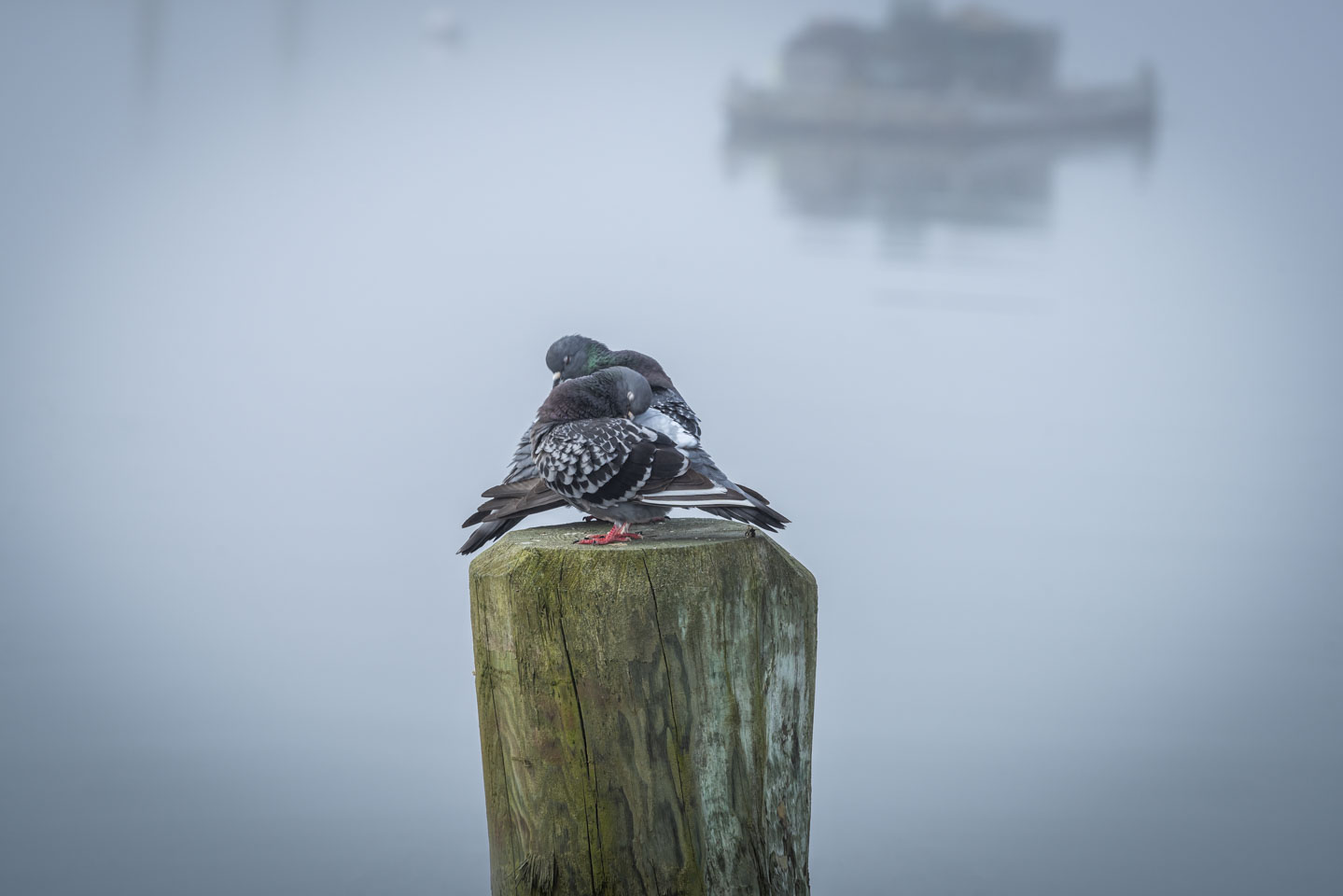
Updated June 2022